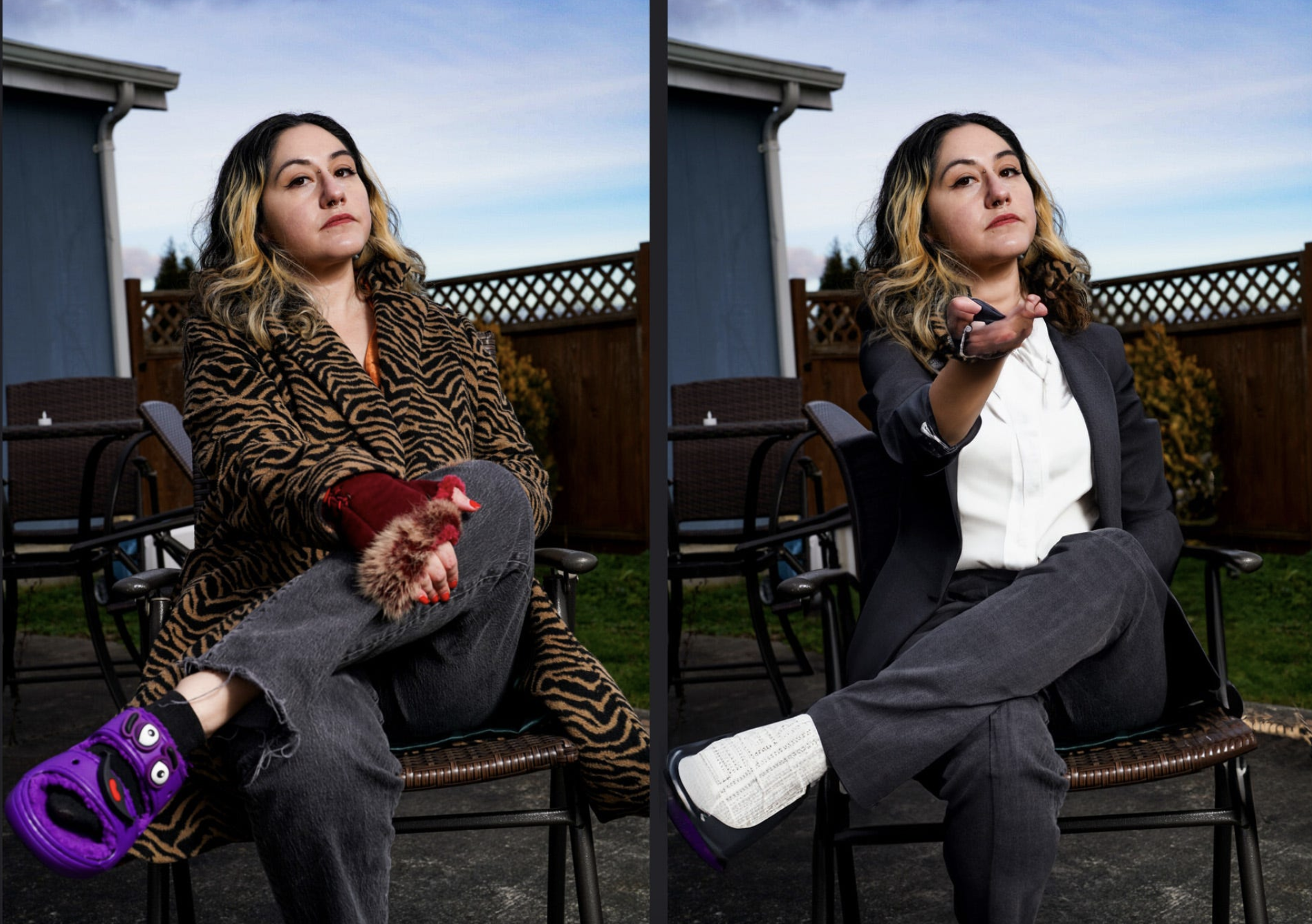Why You Shouldn’t Use AI for Your Headshot
I asked Photoshop AI to give me more professional attire.
and why you should hire a photographer instead
I recently came across this post on LinkedIn:
I just got this portrait in 15 mins for only $30. Yes, it's AI-generated, and 99 percent me! Maybe my LinkedIn me? (LOL). Where I live, it would’ve cost me at least $500 and taken my whole day to find a portrait photographer, buy a suit, and go to a barber.
Farewell, portrait and product photographers, photo retouchers, interview editors, film colorists, mid-level writers, and copywriters. AI isn't a threat to creativity; it's a threat to the creative industries, so adapt now.
Well, farewell to this man. I’m sure the tailor, barber, and photographer who could have split his $500 are shaking their fists at the clouds.
Unlike me, commenters endorsed this sentiment and wanted to know how to get their own $30 AI-generated portrait. As an editor, writer, and portrait photographer, I was irritated by someone telling me to “adapt now,” and claiming a computer could do my job better and for less. But part of me wondered, Does he have a point?
Everyone in the creative industry has confronted the reality of a post-generative-AI world. In the commercial and business world, there is always a push to do more, faster, and the looming threat that you will get left behind if you don’t adapt.
AI is a broad term. It’s long been a part of our daily lives whether we realize it or not (my AI-powered Grammarly extension is literally popping up with suggestions as I write this [it wants me to take out the word ‘literally’]). I’m not here to wage a war against the AI revolution; I would lose.
But there are some things, especially in photography, that generative AI cannot replace.
For one, it cannot capture the truth, which is arguably the foundation of photography, and the reason photojournalism exists. Amber Terranova wrote about a controversial series where creator Michael Christopher Brown used AI to generate “historic” images of Cuban citizens crossing 90 miles of ocean from Havana to Florida.
Brown calls his project “AI Reportage Illustration,” and says:
"Anyone with a Discord application may now illustrate a lensless, photo-realistic reportage illustration on any subject anywhere, and at any time, collaborating with a collective history of photography to illustrate the photographed world and create a vision of what was, is or can be."
First of all, what is “AI Reportage Illustration”? So we’re just making things up now? Be serious. As for the description of this project as “lensless” — isn’t that anything that’s not a photograph? Paintings are lensless. My refrigerator is lensless. Is that disclaimer necessary for images not rooted in photography?
Generative AI is not photography or illustration. It’s an entirely new category of image-making. If presented with transparency, it can be a powerful tool.
Artist Maria Mavropoulou demonstrates this in her family portraits series. Having moved between Uzbekistan, Russia, and Greece, sometimes against her will, she grew up without family photo albums. For this project, Mavropoulou utilized the text-to-image generator DALL-E to visually piece together her family history.
The images, though distorted and far from “photorealistic,” had many accurate details, filling in the gaps in her memories. They allowed her to visualize different scenarios of her history with a simple text prompt. She says:
“While the images don't have any fundamental tie to reality, there is some version of knowledge in them due to the program’s ability to draw from such vast data sets. We attribute fakeness to AI images, but in many ways, they reflect a universal truth.”
Unlike DALL-E, tools like Midjourney (on Discord) and Adobe Firefly generate images nearly indistinguishable from reality. There is AI-generated conceptual art all over Instagram. Creativity is still a factor: you have to come up with the prompt, detailing the style and elements of the image. The results are often dreamy scenarios of women with flawless skin in wildly ornate costumes that defy physics. The comments vary. Some people (like me) are a bit miffed that they were fooled into thinking the image was of a real person, taken by a real person. Some remark on the beauty of the fictional models, i.e. “I wish she was real.” Then again, do we know if the commenters are real? Are we just witnessing bots admiring other bots?
In photography, there’s room for both surreal — or hyperreal— and factual. We gravitate towards otherworldly images. AI art is so prevalent that I’m even more appreciative and astounded when I encounter actual photographs. Photos taken by real people, of real people, in costumes that were sewn and makeup that was hand-painted, against sets that were built and lighting that was carefully designed.
The human element is vital in photography — not just for the end result, but also behind the scenes. The comment I drafted in response to that LinkedIn post asked, What do you want to achieve with this photograph? If you just want to see what you look like in a suit, by all means, pay $30 for AI to dress you up and trim your beard. If the recruiters are impressed, then I guess you’ve won.
But I think most people want an image that truly represents them and preserves a moment in time. No one wants AI-generated photos of their wedding day, for example. It will cost more than $30 and take longer than 15 minutes, but booking a portrait session allows you to connect with another human. A photographer can work with subjects to highlight their truth and capture candid moments between people. Not only will they walk away with a photo that looks and feels like them, but the memory of the experience. To me, that is worth the investment, and more fulfilling than an AI photo, even for LinkedIn.
To quote a random person on the internet, farewell!
